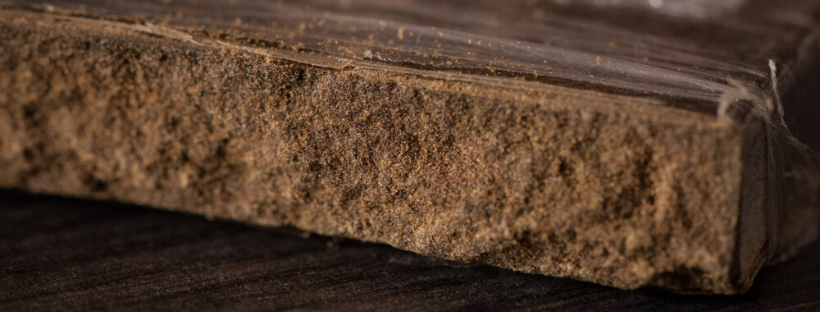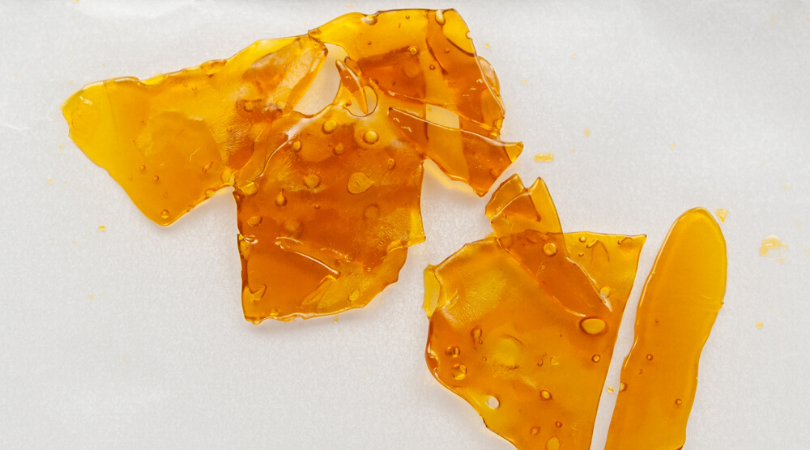Cannabis, Concentrates
What’s the Difference Between Marijuana Wax and Shatter?
Marijuana has been around for medical use for almost 3,000 years, and contrary to what some people want you to think, weed was available in more than one form.
Yes, people have been smoking dried cannabis flowers for centuries but cannabis oils and concentrates like hash were also very popular back then.
However, marijuana concentrates such as shatter and wax are relatively new to the cannabis culture.
In this article, we’ll walk you through the definition of marijuana concentrates and explain the differences between wax and shatter so you may pick the one that suits you better.
What Are Marijuana Concentrates?
Marijuana concentrates are exactly what they sound like — it’s cannabis with above-average concentrations of THC.
The THC content in some of today’s marijuana strains can reach up to 35%.
With concentrates, THC levels start at upwards of 60%, peaking at 90% of the psychoactive compound.
For recreational users, marijuana concentrates mean a stronger high and less material to get baked, which comes particularly handy for consumers with a high tolerance to THC.
For medical marijuana patients, concentrates like wax and shatter can provide faster and longer-lasting relief than flower and other less potent forms.
How are concentrates made?
There are two ways to extract large quantities of THC from the source plant.
Solventless Marijuana Concentrates
As the name suggests, solventless concentrates are made without a solvent. Making your extracts this way requires you to use natural forces, such as pressure, heat, or ice to strip the beneficial compounds from the plant. The most classic method involves using bare hands — that’s how the famous Nepalese hash is made — whereas others call for using a mechanical press or another tool (e.g. hairdresser).

Popular types of solventless concentrates:
- Hash
- Ice water hash
- Bubble hash
- Kief
- Dry sift
- Rosin
- Live resin
Solvent-based Marijuana Concentrates
This type of marijuana concentrate uses some kind of a solvent to extract cannabinoids and terpenes from the plant material. People commonly use solvents like CO2 or hydrocarbons (butane and propane) to make solvent-based concentrates.
Popular types of solvent-based concentrates:
- Tinctures
- Wax
- Shatter
- Crumble
- CO2 oil
- Budder
Let’s talk about shatter and wax.
What is Shatter?
Shatter is the purest of all cannabis concentrates, which shouldn’t come to anyone’s surprise considering its glass-like consistency and an opaque honey-gold color.
Shatter can be made with butane or CO2 and boasts extremely high levels of THC, often testing 90% per volume.
Is it possible to make shatter in home conditions?
Technically yes, but it may not be legal where you live, even if your local law allows the sales of marijuana concentrates. That’s because hydrocarbons like butane and propane are highly flammable and their misuse can lead to explosions.
CO2, in turn, requires expensive equipment and specialized knowledge, so it’s out of reach for most people.
Once you’ve purchased your shatter, it’s best to store it in the fridge so that it maintains its solid state.
What is Wax?
Wax is another form of BHO extraction, one that has a more crumbly and loose consistency, similar to ear wax.
Similar to shatter, wax produces a powerful, long lasting high on top of the medical benefits coming from the source strain.
The extraction of wax begins when the extract takes an amber liquid form after the initial butane extraction. Then, the liquid is heated up to make a translucent, slightly loose substance that looks like something between honeycomb and ear wax.
This is due to the fact that the molecular structure of wax is more of a tangled mess.
Speaking of which, let’s shed more light on the differences between shatter and wax.

What’s the Difference Between Marijuana Wax and Shatter?
Although both wax and shatter are extracted from the same plant, there’s a reason why some people prefer one form over the other. Use this section as a guidepost to decide which one will suit you better.
1. Consistency
The consistency of shatter is solid. This concentrate resembles a large sheet of glass that easily gets shattered when dropped. This makes it more difficult to handle for consumption than wax.
Wax, on the other hand, has a more crumbly texture that suits a wider range of consumption methods.
2. Potency
Shatter is usually more potent than wax. Some shatter strains can sit as high as 90% THC and up.
Wax may not reach this level of strength as often as shatter, but its potency is usually measured at 70–85% of THC.
The difference in potency levels brings another important difference.
3. Purity
Shatter is a purer concentrate than wax because it doesn’t contain as many naturally occurring plant compounds (e.g. waxes and oils) due to better filtration. Wax may not be as pure and potent as shatter, but it certainly offers more flavor.
4. Terpene Content
The higher the THC content in your extract, the more terpenes are destroyed during the extraction. Shatter offers the least flavor among all marijuana concentrates due to its exceptional purity. If you want to draw more flavor from your dabs, we recommend choosing wax over shatter.
5. Preferred Consumption Methods
The consistency of shatter makes it difficult to handle. Most often, people inhale it through a vaporizer or dab rig.
With wax, it’s a different story. Wax is more versatile and thus can pair with more consumption methods than shatter. Aside from using it in a vape or rig, you can drop some wax on top of a joint or bowl, or add it to cannabutter for extra potent edibles.
Final Thoughts on the Differences Between Marijuana Wax and Shatter
Although they come from the same plant, marijuana wax and shatter are different in terms of their potency, flavor profile, texture, ease of use, and how they’re made. Wax is easier to produce but degrades faster than shatter. However, shatter is harder to measure out and consume due to its consistency. It also has less flavor and thus its potency may be considered “bland” by some users.
How do you like your marijuana concentrates? Share your experience with wax and shatter in our comment section!


